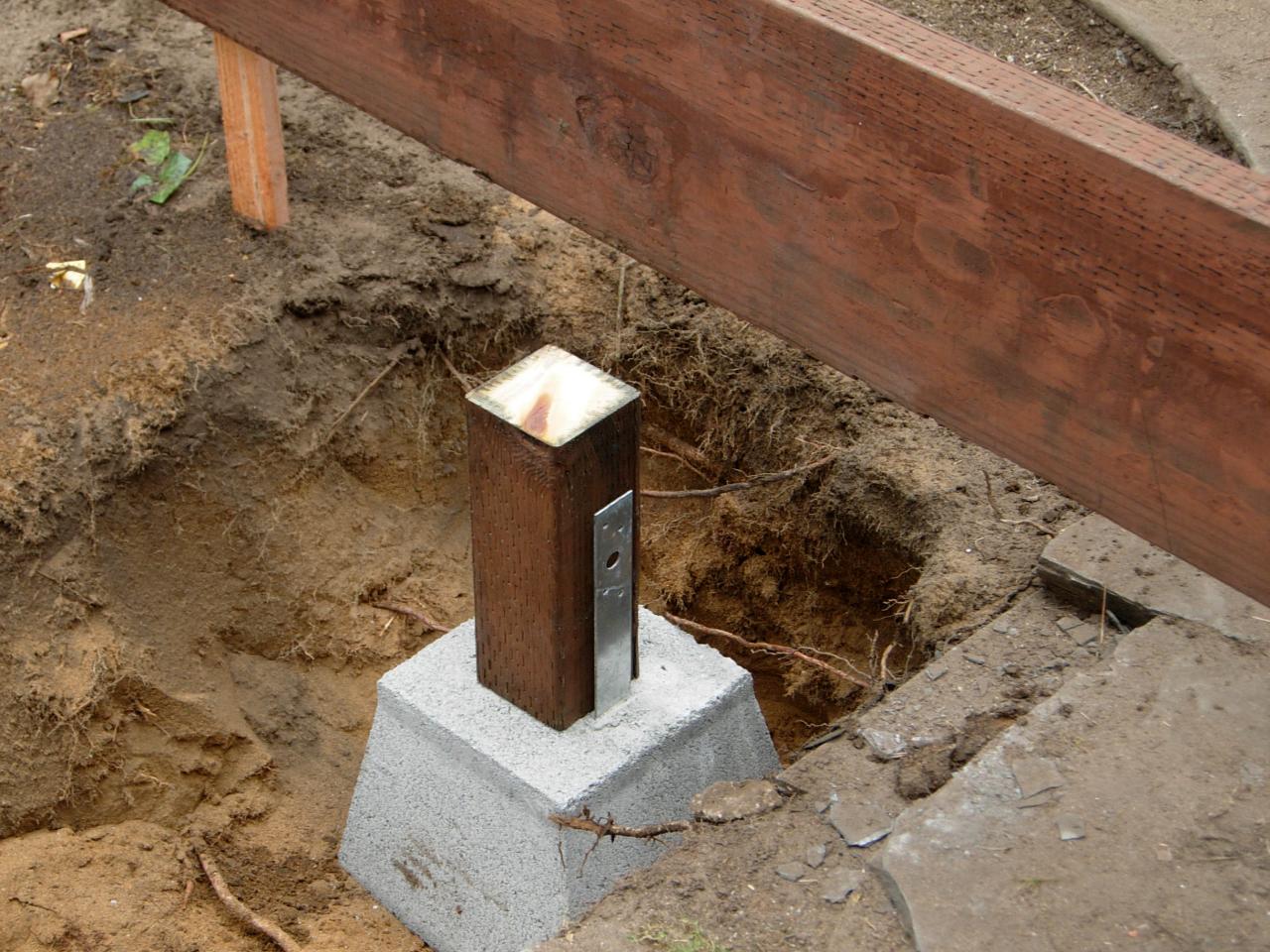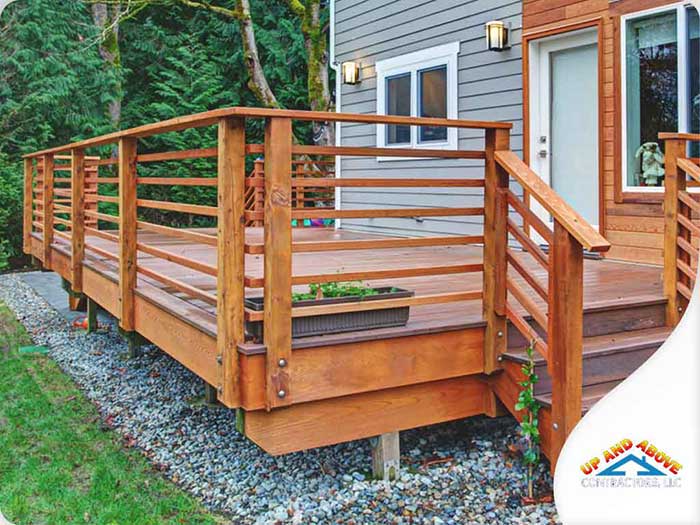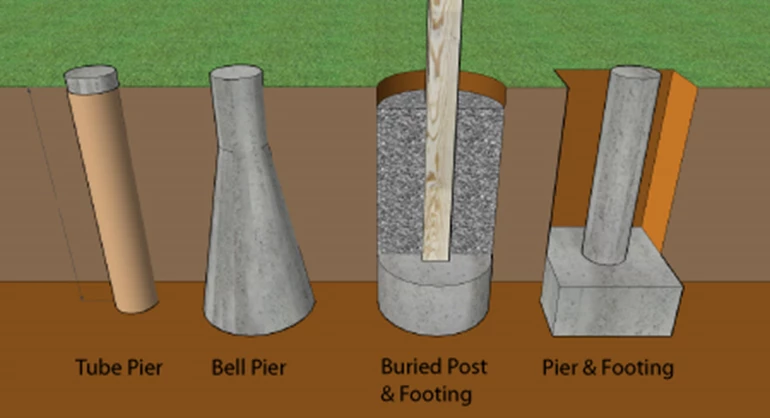Make Certain Stability and Long Life With Correctly Mounted Deck Footings
Deck footings might not be the most extravagant element of deck building, but they play a vital function in guaranteeing stability and longevity. In this conversation, we will certainly explore the importance of correct deck grounds, aspects to think about throughout setup, different types of footings readily available, detailed setup overview, and upkeep suggestions for ensuring durable footings.

Significance of Correct Deck Footings
Why are effectively installed deck footings vital for the security and long life of your deck? The answer hinges on the essential function that deck grounds play in sustaining the weight of the whole framework. Deck grounds are the structure on which the deck relaxes, moving the lots from the deck to the ground. When footings are not correctly set up, it can result in a variety of concerns that compromise the stability and longevity of the deck.
To start with, appropriately installed deck grounds disperse the weight of the deck equally, stopping any type of unequal settling or sinking. This is particularly important in locations with unpredictable dirt, as it assists to minimize the danger of the deck moving or breaking down. In addition, well-installed footings ensure that the deck remains degree, stopping any architectural damage that can take place when a deck ends up being irregular.
Second of all, properly mounted grounds provide a solid support for the deck, avoiding excessive activity and persuade. This helps to keep the structural honesty of the deck, lowering the danger of accidents or injuries. It likewise minimizes the damage on the deck, enabling it to withstand the aspects and regular usage for a longer period of time.
Aspects to Take Into Consideration for Deck Ground Installation
When mounting deck grounds, there are a number of essential factors to consider for correct setup. Different soil types have various load-bearing capacities, so it is crucial to perform a dirt test to ensure the grounds can support the weight of the deck and its occupants. By taking right into account these aspects, you can guarantee the proper installment of deck grounds and delight in a stable and durable deck.
Sorts Of Deck Footings to Select From
There are a number of different kinds of deck grounds offered for you to pick from. Each type has its own advantages and drawbacks, so it's important to consider your details needs and the problems of your deck prior to choosing.
One common sort of deck ground is the concrete ground. This includes excavating openings in the ground and putting concrete into them to create a strong structure. Concrete footings are durable and provide superb security, making them appropriate for decks in areas with challenging soil conditions or high wind loads.
Another alternative is the helical pier footing, which contains a steel shaft with helical plates that are screwed right into the ground. These footings fast to mount and can be made use of in different soil kinds, including sandy or clay soils. They are additionally adjustable, enabling very easy leveling of the deck.
Sonotube grounds are one more popular option. These footings are developed by putting a cardboard tube in a hole and loading it Our site with concrete. Sonotube footings are reasonably simple to mount and supply adequate security for smaller decks or in locations with less requiring soil problems.

When choosing the type of deck footing, it's essential to think about elements such as soil conditions, deck size and weight, local building ordinance, and individual choices. By choosing the proper footing type, you can guarantee the stability and longevity of your deck.
Step-by-Step Overview for Putting Up Deck Footings

Identify the location: Start by noting the exact setting of each ground using stakes and string (Deck Footings). Consider any regional building regulations or laws concerning obstacle ranges
Dig the openings: Use a message hole digger or an auger to dig the openings for the grounds. Normally, a deepness of at the very least 36 inches is advised for security.
Degree the openings: Ensure that all-time lows of the holes are level (Deck Footings). This can be achieved by utilizing a level or a straight board across the top of the holes
Add gravel: Place a layer of gravel at the bottom of each hole to improve drainage and prevent the footing from sinking into the soil over time.
Insert the ground kinds: Put the ground creates right into the holes, ensuring they are centered and degree. Use stakes to secure them in place.
Mix and pour concrete: Adhere to the guidelines on the concrete mix bag to prepare the concrete. Put the concrete right into the footing forms, filling them entirely.
Smooth the surface area: Utilize a trowel to smooth the surface of the concrete and eliminate any air pockets. Allow the concrete to heal according to the supplier's directions.
Maintenance Tips for Lasting Deck Grounds
Correct upkeep is vital for making sure the durability and stability of deck grounds. By on a regular basis examining and maintaining your deck grounds, you can stop damage and potential safety and security dangers. One essential aspect of upkeep is to frequently check for any kind of indications of wear and tear, such as cracks or motion in the footings. It is important to resolve them quickly to stay clear of further damages. if you notice any kind of issues.
Regular cleansing is additionally vital for keeping deck footings. Vegetation, debris, and dirt can collect around the footings, which can cause moisture accumulation and decay. Cleansing the footings regularly, utilizing a brush or a stress washing machine, can help avoid these problems and expand the life-span of your deck.
In addition to cleaning, it is very important to keep the area around the footings clear of any type of blockages. Prevent piling things versus the grounds or permitting plants to expand also near them. These blockages can catch dampness and trigger the grounds to degrade with time.
Last but not least, normal resealing of the grounds is advised to protect them from moisture and various other ecological variables. Using a water-proof sealer can help prevent water damage and prolong the life expectancy of the footings.
Conclusion
Finally, proper installation see this site of deck grounds is critical for ensuring security and durability of your deck. Elements such as soil kind, lots try this website ability, and regional building codes need to be taken into consideration when picking the ideal type of deck footings. Adhering to a detailed guide for installation and routine maintenance will certainly aid to make sure the footings continue to be sturdy and resilient.
In this conversation, we will explore the relevance of appropriate deck footings, elements to think about throughout setup, various kinds of footings available, detailed setup overview, and maintenance tips for making certain resilient footings. Deck footings are the structure on which the deck relaxes, moving the tons from the deck to the ground.One common kind of deck ground is the concrete footing. Place the footing types: Put the footing creates into the openings, ensuring they are focused and level.In final thought, proper setup of deck grounds is vital for guaranteeing security and longevity of your deck.